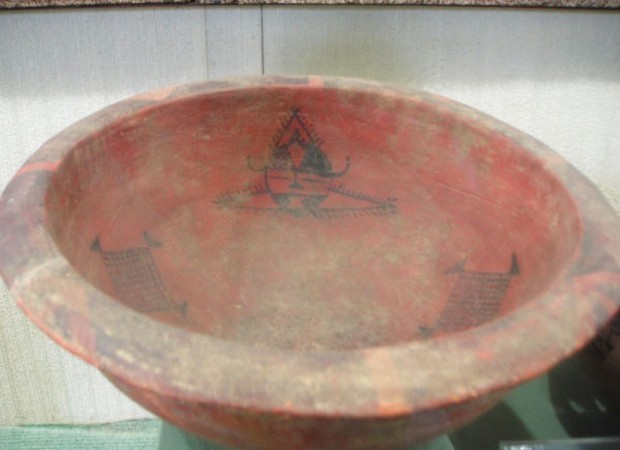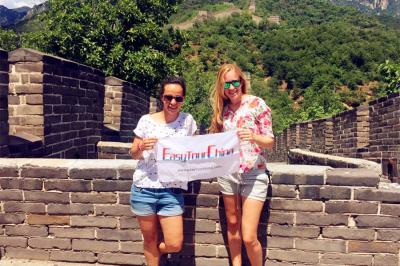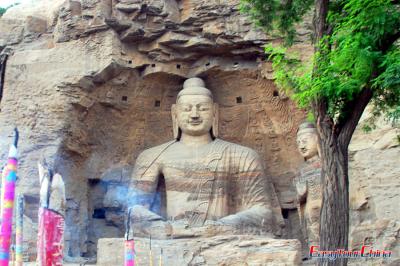Xian Banpo Museum
Located on the eastern outskirts of Xian, the Xian Banpo Museum is the first on-location prehistoric relics museum in China based on Banpo Village Ruins. The five excavations lasted from 1953 to 1957. About 400 sites of this type have been discovered around the Yellow River Valley with the Banpo Village Site being the largest one. It is also the most complete example of an agricultural Neolithic village site in the world.
Xian Banpo Museum reveals a typical Neolithic Yangshao matriarchal clan settlement about 6000 years ago, which contains rich cultural connotations such as social organization, production and life, economic form, marital status, customs, culture and art, etc. It has been rated as one of the "top 50 places for foreigners to go in China". Visitors from home and abroad can see how villagers in a matriarchal clan community lived in ancient China when traveling in Xian.
Xian Banpo Museum Facts

What to See at Banpo Museum?
The ruins site was discovered in 1953 by workers laying the foundations for a factory and the excavation work last four years. In 1958, Banpo Village Ruins opened to the public. The site is a large area of 5-6 hectares and surrounded by a man-made moat, 300 meters long and about two meters deep and two meters wide, protecting the village from attacks from wild animals and from the effects of heavy rainfall.
Xian Banpo Museum is composed of three exhibition halls for cultural relics, a main exhibition hall on the site and a temporary exhibition hall, including dwelling areas, a pottery-making center, and a burial ground, covering 50,000 square meters. Exhibits on display include tools and utensils. The museum was set up and opened to the public in 1958, renovated around 2005.
Entering the museum gate, you can see a pool of water lilies. In the middle of the pool stands the sculpture of "banpo girl", with her hair in a high bun, wearing linen clothes, holding a pointed bottom bottle by hand, vividly representing a female image of the matriarchal society of Yangshao culture.

One fifth of the whole Banpo village (about 10,000 square meters) has already been exhumed with a surrounding moat about 5 meters deep and 6 meters wide. The cemetery is located north of the moat. To the east is the pottery-making center. The distribution of the habitation area, the pottery-making center and the cemetery reflects the Banpo people's idea of planning. Among the ruins are 46 dwellings, 2 domestic animal pens, more than 200 storage pits, six pottery kilns and 250 graves, including 73 burial jars for children.
About 10, 000 artifacts have been exhumed, together with a large number of animal bones and fruit pits. Production tools used by the Banpo people, including stone knives, sickle, fishhook, specula are displayed in the museum, which delivers visitors a vivid picture of the lifestyle of the primitive Banpo people a very long time ago.
>> Related reading 7 Oldest Archaeological Sites in China
Cultural Relics Exhibition Hall
The exhibits are categorized into stone tools, bone artifacts, and pottery. The hall primarily displays production tools, daily utensils, and artworks used by ancient inhabitants unearthed from the Banpo and Jiangzhai archaeological sites. These include stone axes, stone hoes, stone knives, scrapers, hammerstones, arrowheads, grinding stones, spindle whorls, bone awls, bone knives, bone needles, fish hooks, fish spears, pottery bowls, basins, cups, jars, steaming pots, and pointed-bottom bottles.
Additionally, the hall displays artistic pieces such as pottery whistles, human-headed, bird-headed, and animal-headed figurines, along with various ornaments. The twenty-two types of incised symbols unearthed at the Banpo site are also exhibited here.
Banpo Site Hall
This hall represents part of a primitive village. Early dwellings were semi-subterranean structures—half buried underground with pit walls forming the foundation, while the exposed upper half was roofed. These low-ceilinged houses were damp. By the late primitive society period, walls were built above ground and supported by wooden pillars. This upright wall structure with sloping roofs laid the foundation for China's traditional architectural style.
The site also features a large defensive ditch over 300 meters long, approximately 5 meters deep, and 6 meters wide. This structure served as a fortification to protect the settlement from incursions by rival tribes and sudden attacks by wild beasts.
Public burial grounds, cellars, and communal granaries are also visible within the archaeological remains.
Top Treasure of Xian Banpo Museum
Among the numerous cultural relics unearthed at Banpo Site, the most famous are the fish-grain basin with human face and the reticular-pattern basin with human face. The former is in the National Museum now, the latter in the Xian Banpo Museum, both are first-class national cultural relics.
As the top treasure of here, the reticular-pattern basin with human face, what does it use for?

Experts believe that Banpo people have the custom of urn-coffin burial, early-dead infants were placed in a pottery urn, and covered with a basin, buried near the house. The two basins are the covers of the urn coffin. More than 6,000 years ago, due to the harsh natural environment and low living condition, the child mortality rate was very high. Of the 250 tombs excavated at the Banpo Ruins, 73 are children's tombs. The infants placed in the urn coffins like in the mother's abdomen, the hope that the children have a safe home, reflecting a humanistic care of the Banpo people.
How to Get to Xi’an Banpo Museum?
Get off at Banpo Station from Metro Line 1, and go west for 300 meters and turn left at Banpo Road for 200 meters.
Bus 105, 406 and 913 can reach the museum directly. Or take Bus 11, 42, 323,241, 401, 511 or 714 to Banpo Stop, get off and walk 150 meters to the south to reach the destination.


